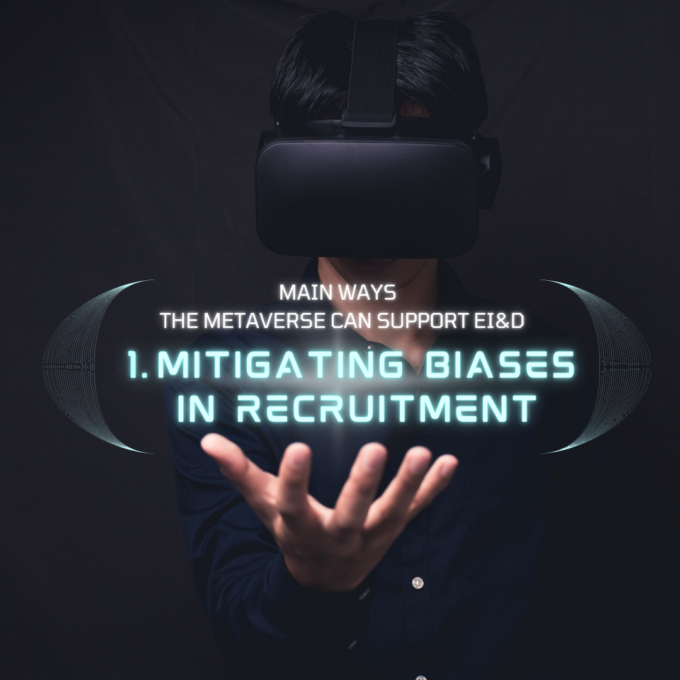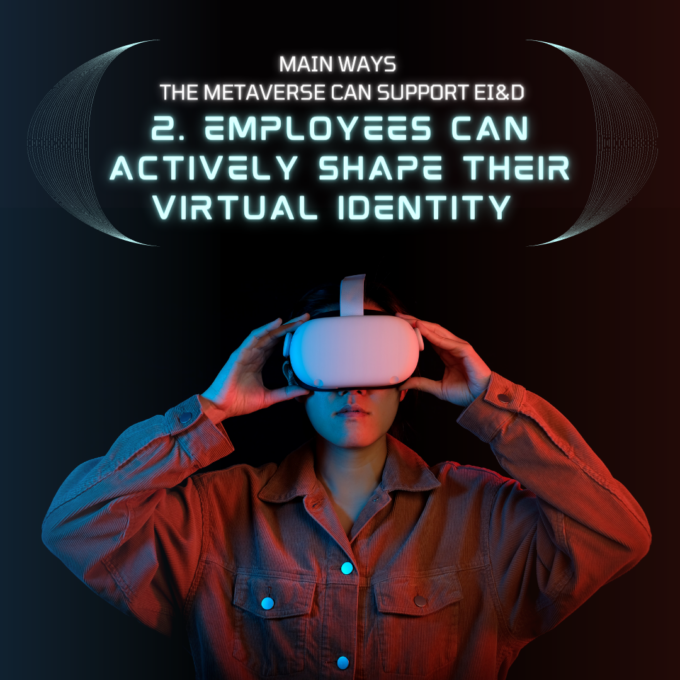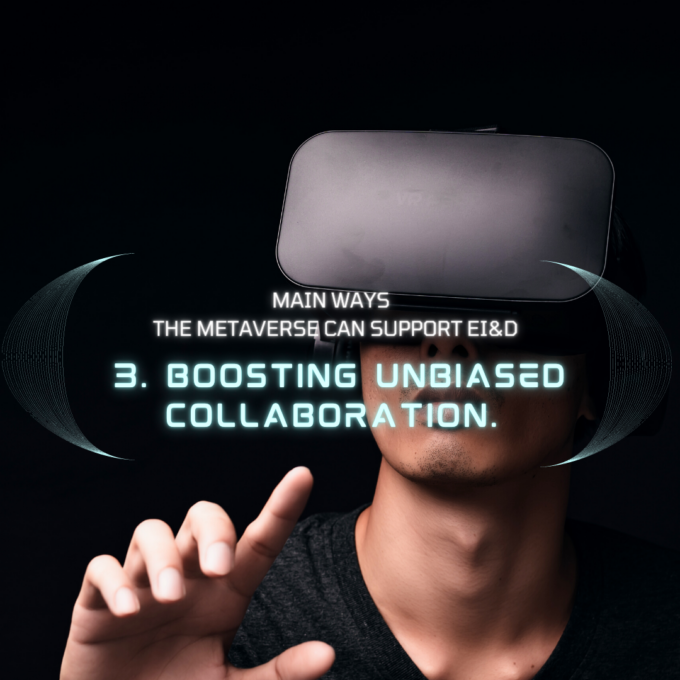3. Boosting unbiased collaboration
When employees collaborate in VR spaces represented by avatars, they are able to connect regardless of geographical, cultural, or linguistic restrictions, with the shared aim of solving a particular problem. Their avatar can put everyone ‘on the same foot’ when it comes to identity – once the familiar cues of cultural, gender, or age-based stereotyping biases have been covered up, coworkers are able to focus on the ideas put forward rather than being distracted by the identity of the person who has proposed them.
Additionally, when people collaborate in virtual spaces, it can eliminate exclusion created by situations where some attendees are physically present and some have joined remotely – a common scenario in the post-pandemic hybrid working environment.
Drawbacks
For all the potential upsides of using virtual workspaces, there are potential downsides. The emergence of the metaverse creates new ways for human behavior – positive and negative – to play out.
Firstly, the metaverse exposes users to the possibility of virtual harassment, trolling, and bullying. Platforms are extremely difficult to regulate; one study, carried out in Facebook’s VR Metaverse, recorded 100 potential policy violations during just 11.5 hours of use. When platforms are used within organizations, the challenges are different, but employers should still ensure they put measures in place to keep their people safe, especially if they have to rely on platform providers that are still getting to grips with the dangers themselves.
The second potential drawback relates to access. How can organizations offer inclusive access to the metaverse in the first place? Just as it is hard for people with lower socioeconomic status to access higher levels of education, there are likely to be challenges to their accessing the metaverse. Will diverse businesses across the world be able to access it, or will there be a paywall that only wealthier businesses can scale?
There is a further question about potential discrimination against individuals who are not ‘digital natives.’ As organizations engage with the metaverse, they need to consider not only access, but the democratic availability of the skills required to negotiate this new environment productively.
How organizations can create DE&I spaces in the metaverse
It is abundantly clear that the metaverse has huge potential to impact on DE&I, both for good and ill. There are four key points that CEOs should consider to ensure a positive impact on their organizations.
1. Design for DE&I
The key principle is that DE&I must be built into the frameworks in which virtual spaces operate. As the metaverse is still being built, organizations have a unique opportunity to create a world that is fair by design. This will not happen by accident – it needs to be the product of positive action. Every aspect of the metaverse should be designed with DE&I in mind. It will be far more difficult to reverse engineer systems if and when problems emerge than to anticipate those problems with built-in solutions.









 Audio available
Audio available